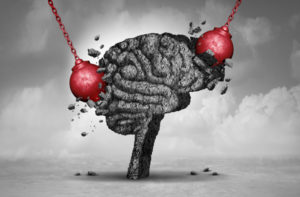Physiotherapy for Migraines & Headaches
A migraine is a common condition characterized by sharp, throbbing pain on the head. Migraine attacks can last for hours to days. They’re often accompanied by nausea and sensitivity to light, sound, and smells.
A migraine can start to develop during childhood until early adulthood. It also comes in four stages although it’s possible for a patient to not experience them all.

Before your migraine attacks, you may experience the Prodrome stage. Symptoms include mood changes, food cravings, and constipation among many others. The next stage is known as Aura. Many don’t experience this, though. Aura includes visual disturbances, such as vision loss. It can also be accompanied by numbness of the face and difficulty speaking.
The frequency of migraine attack itself varies from one person to another. Some may experience it rarely while for some, it can occur several times a month. When migraines strike, you may feel sharp or pulsing pain on one or both sides of your head. You may also experience vomiting.
After the migraine attacks, the final stage called postdrome occurs. Here, you may feel exhausted, dizzy, or confused. The condition may last for about 24 hours.
Migraine Causes
There are several factors that may trigger the onset of a migraine attack. Here are some of them:
- Decrease in serotonin levels. Imbalance in brain chemicals that help control pain in the nervous system may trigger migraines.
- Women are more likely to develop migraines especially during puberty and beyond. Women with migraine history also often report they experience attacks before or after their periods.
- Migraines can occur at any age but they tend to peak during a person’s 30s.
- Family history. You may be at higher risk of developing migraine if you have family members experiencing the same.
- Intake of hormonal medications such as oral contraceptives may also trigger migraines. There are some women, though, that report to experiencing migraines less often when taking these medications.
- Processed and salty foods may also trigger migraines. Poor eating habits may also contribute to the onset of the attacks.
- Drinks. Beverages that are high in caffeine may also trigger migraines.
- Poor sleep. Changes in sleep patterns, lack of sleep, and oversleeping may also prompt headaches.
- Changes in the environment. Sudden changes in the temperature or weather may also provoke migraines.
- Physical factors. Intense physical activities may also contribute to migraine attacks.
Can Physiotherapy Help Manage Migraine?
Migraine is a condition affecting the central nervous system which includes nerves and blood vessels.
Medications and other treatments may help address issues concerning the central nervous system. Physiotherapy, on the other hand, may help manage pain and discomfort affecting muscles and joints. The treatment that physiotherapy may offer depends as to how involved the muscles and joints are on your migraine attacks.
Pressure or pain in the head can either be a headache or a migraine. A headache can be mild to severe and usually causes pain on both sides of the head. Migraines, on the other hand, usually only affect one side of the head. There are cases, though, when it also involves both sides of the head. When severe, migraine can also prevent a person from performing normal everyday activities.
It’s important to identify, through the help of a health professional, whether you are experiencing a traditional headache or a migraine. This is so appropriate treatments can be identified early on and the onset of attacks can as well be prevented.
One common type of headache is called cervicogenic headache. A cervicogenic headache involves the neck structures and when it strikes, you may feel pain in your head, jaw, and even on the back of your eyes. You may also experience difficulties turning your head.
Working with a Physiotherapist to Relieve Migraine and Headaches
Your physiotherapist will conduct a history and physical examination to determine which treatments may be appropriate for your case.
Since the goal of your physiotherapy treatment is to reduce stress and tension affecting your muscles and joints, their focus will be on these areas. Any issues involving posture and physical strength will also be addressed.
Your physiotherapist will help you restore mobility in affected areas. If your headache or migraine is mild, pain may be relieved within a few days. Your treatment duration can last depending on the gravity of your condition.
If you’re looking for a physiotherapist in Halifax to help you manage your migraine or headaches, our team at One to One Wellness is here. Call us at (902) 425-3775. Let’s work together so you can manage and prevent headache attacks from striking again.

Phone: (902) 425-3775
Fax: (902) 425-3774
ONE TO ONE WELLNESS CENTRE
1535 Dresden Row suite 210
Halifax, NS B3J 3T1
Copyright © 2025 One To One Wellness | All Rights Reserved | Powered by H-Cube Marketing